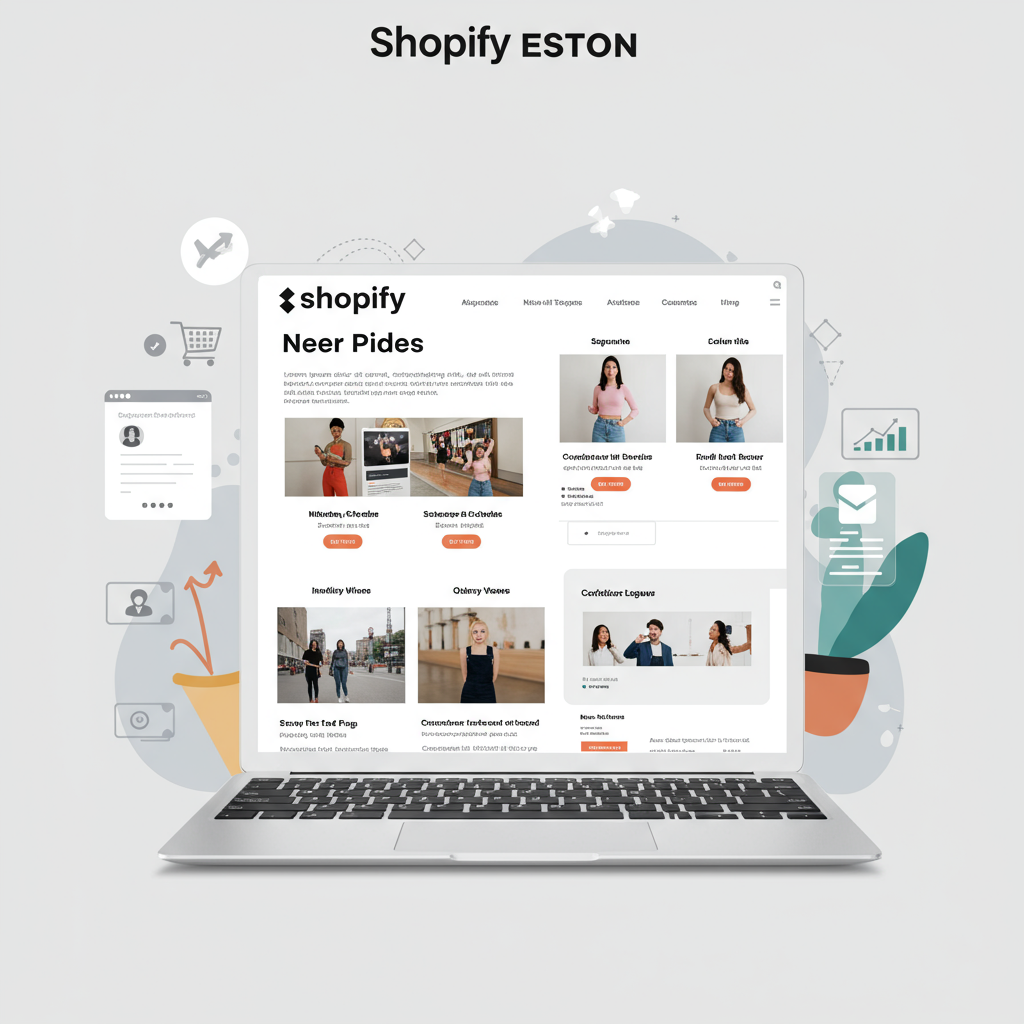Discover the key design principles and emerging trends to make your Shopify store’s first impression unforgettable and highly effective.
As a Shopify merchant, you know your online store’s homepage is more than just a digital storefront; it’s your brand’s first impression, your virtual handshake with potential customers.
In the rapidly evolving e-commerce landscape, staying ahead means constantly refining your approach, especially as we look towards 2025.
The design choices you make today for your Shopify homepage will significantly impact your conversion rates, customer engagement, and ultimately, your bottom line tomorrow.
I’ve spent countless hours analyzing trends and best practices, and I’m excited to share my insights on how to craft a compelling and high-performing Shopify homepage for the year 2025.
My goal is to equip you with actionable tips that will not only make your store look fantastic but also function as a powerful sales engine.
One of the biggest shifts we anticipate is the deeper integration of AI-driven personalization. Your homepage should dynamically adapt to individual visitor behavior.
This means showcasing products they’ve viewed, recommending related items, or even tailoring promotional banners based on their browsing history and demographics.
Leveraging Shopify apps that offer AI-powered recommendations will be crucial for creating a truly unique and engaging experience for every visitor.
Static images are becoming a thing of the past. Customers in 2025 will expect more immersive ways to interact with products.
Consider integrating 3D models, augmented reality (AR) previews (especially for fashion, furniture, or home goods), and high-quality product videos directly on your homepage.
A captivating hero video showcasing your brand story or product in action can instantly grab attention and convey value far more effectively than text alone.
Consumers are increasingly conscious of a brand’s values. Your homepage is the perfect place to subtly highlight your commitment to sustainability, ethical sourcing, or community involvement.
This could be through a dedicated section, trust badges, or even a small banner that links to your ‘About Us’ or ‘Sustainability’ page. Authenticity here is key.
This isn’t new, but its importance will only intensify. A significant portion of your traffic will come from mobile devices, so your homepage *must* be flawlessly responsive and incredibly fast.
Google’s Core Web Vitals will continue to be a critical ranking factor, meaning slow loading times will not only frustrate users but also penalize your search visibility.
I always recommend optimizing images, minimizing code, and leveraging Shopify’s built-in speed optimizations to ensure a lightning-fast experience.
The hero section is your prime real estate. It needs a clear, compelling message, a high-quality image or video, and a prominent call-to-action (CTA) that guides visitors to your main offering.
Think about what problem your product solves or what unique benefit you offer, and communicate it instantly.
Your menu should be intuitive and easy to use, allowing visitors to quickly find what they’re looking for. Consider mega-menus for larger inventories.
Showcase your best-sellers, new arrivals, or seasonal collections directly on the homepage. Use attractive product photography and concise descriptions.
Customer reviews, testimonials, user-generated content (UGC), or even media mentions build trust and credibility. Integrate these elements prominently.
Every section of your homepage should have a purpose and a clear CTA. Whether it’s ‘Shop Now,’ ‘Learn More,’ or ‘Sign Up,’ make it obvious what you want the visitor to do next.
If you have a blog, feature recent articles on your homepage. This not only provides fresh content but also positions you as an authority in your niche and improves SEO.
Easy access to FAQs, contact information, shipping policies, and secure payment badges reassures customers and reduces friction.
Beyond speed, ensure your homepage uses relevant keywords in its title, meta description, and content. Optimize image alt text.
Design with all users in mind. Ensure good color contrast, readable fonts, and keyboard navigation support. An accessible site is a better site for everyone.
Don’t just set it and forget it. Continuously test different headlines, images, CTAs, and layouts to see what resonates best with your audience.
Small tweaks based on data can lead to significant improvements in conversion rates over time.
The e-commerce world is dynamic. Design your homepage with flexibility in mind, allowing for easy updates to promotions, product launches, and seasonal changes without a complete overhaul.
Crafting a powerful Shopify homepage for 2025 is an ongoing journey, not a destination. It requires a blend of aesthetic appeal, technical prowess, and a deep understanding of your customer’s evolving needs.
By focusing on personalization, immersive experiences, mobile optimization, and clear communication, you’ll be well on your way to creating a homepage that not only attracts but also converts.
What do you think about this article? I’d love to hear your thoughts and any strategies you’re planning to implement!
I believe these tips will provide a solid foundation for your strategy.
Remember, your homepage is your digital front door. Make it welcoming, informative, and irresistible.






